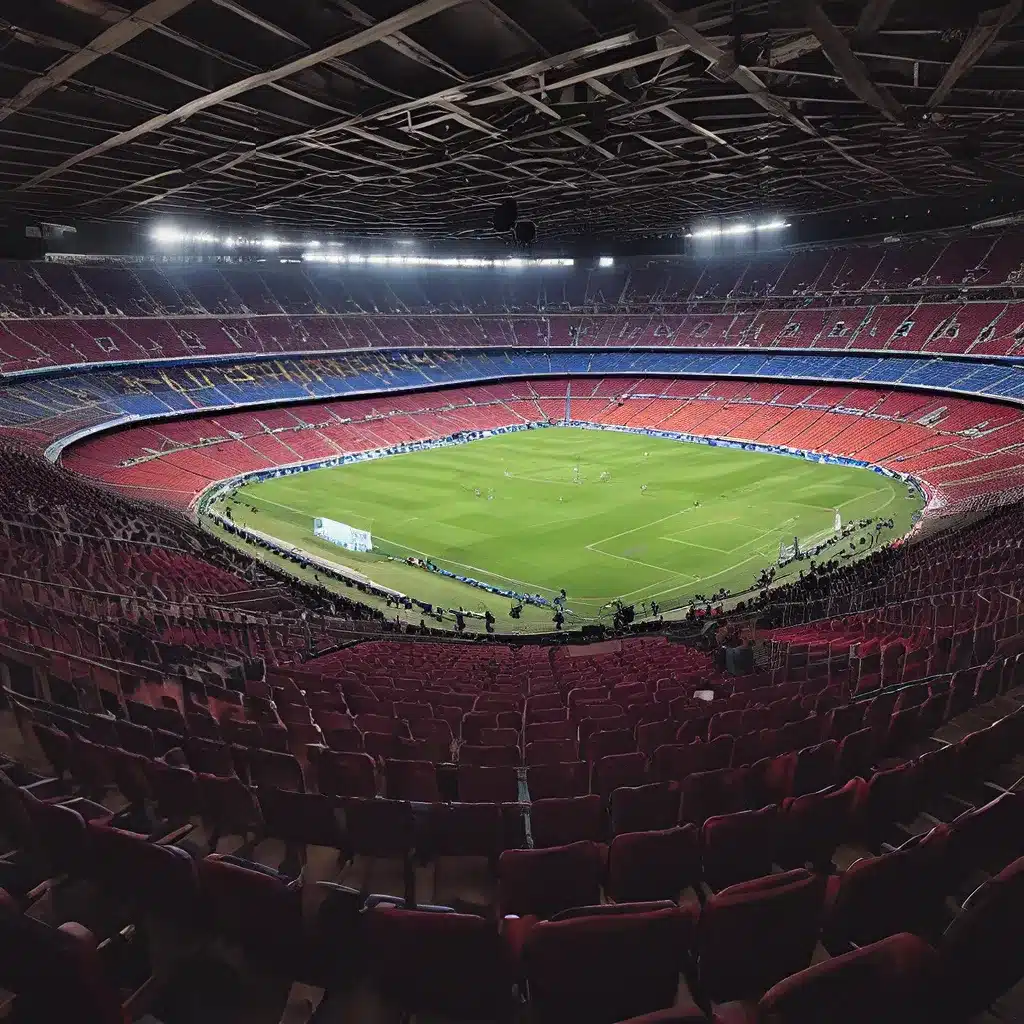
Barcelona, a city that needs no introduction, is a captivating tapestry of history, culture, and modernity. As you wander its streets, you’ll find yourself immersed in a unique blend of architectural marvels, artistic treasures, and a zest for life that’s truly infectious. But the capital of Catalonia is not just a single entity; it’s a mosaic of neighborhoods, each with its own personality and story to tell.
The Camp Nou: A Storied Stadium with a Modernist Twist
At the heart of this vibrant city lies the Camp Nou, the home stadium of the iconic FC Barcelona. This colossal arena is more than just a sports venue; it’s a testament to the city’s unwavering passion for the beautiful game and its ability to seamlessly blend the old and the new.
The origins of the Camp Nou can be traced back to the early 1950s, when the club recognized the need for a larger and more modern stadium to accommodate their growing fan base. The decision to build a new home for the team was a bold one, as it would involve demolishing the club’s previous stadium, the Les Corts. This move was not without controversy, as the Les Corts held a special place in the hearts of many Barcelona supporters.
However, the club’s vision for the future prevailed, and in 1957, construction began on the new stadium. The architect tasked with this monumental project was Francesc Mitjans i Miró, a renowned figure in the world of Catalan Modernism. Mitjans’ design for the Camp Nou was a masterful blend of functionality and aesthetics, reflecting the city’s rich architectural heritage.
Embracing Modernism and Functionality
The Camp Nou’s architectural design was a departure from the traditional stadium structures of the time. Mitjans incorporated elements of Catalan Modernism, a style that celebrated organic forms, intricate details, and a harmonious integration with the surrounding environment. The stadium’s sweeping, curved stands and the use of reinforced concrete created a striking silhouette that stood in contrast to the more rigid, angular designs of other sports arenas.
One of the most distinctive features of the Camp Nou is its iconic facade, which features a series of arched entrances and a striking clock tower. This design not only served a practical purpose, allowing for efficient crowd management and access, but also imbued the stadium with a sense of grandeur and timelessness.
The functional aspects of the Camp Nou were also meticulously considered. The stadium was designed with ample seating, state-of-the-art lighting, and a robust infrastructure to support the club’s growing ambitions. The pitch itself was meticulously crafted, with a drainage system that ensured the playing surface remained in optimal condition even during inclement weather.
Expansion and Adaptation
As the years passed, the Camp Nou continued to evolve, reflecting the changing needs of the club and its supporters. In the 1990s, the stadium underwent a major renovation and expansion, increasing its capacity to over 99,000 seats, making it the largest stadium in Europe by that measure.
The expansion project, led by architect Albert Viaplana, seamlessly incorporated new elements while preserving the stadium’s iconic Modernist aesthetic. The addition of the Nou Gol stand, with its distinctive curved roof, not only enhanced the stadium’s seating capacity but also complemented the original architectural vision.
Today, the Camp Nou stands as a testament to the city’s unwavering commitment to preserving its rich cultural heritage while embracing the demands of the modern era. The stadium’s continued evolution, both in terms of its physical structure and its role within the city, is a reflection of Barcelona’s ability to adapt and reinvent itself.
Connecting the Past and Present
The Camp Nou’s significance extends beyond its role as a sports venue. It is a symbol of Catalan identity and pride, a place where the city’s cultural, social, and political currents converge. The stadium has borne witness to some of the most significant moments in the club’s history, from triumphant victories to heartbreaking defeats, and has become a rallying point for the city’s passionate supporters.
Interestingly, the stadium’s location in the heart of the city’s Eixample district further emphasizes its role as a cultural and architectural landmark. The Eixample, a neighborhood renowned for its grid-like layout and stunning Modernist buildings, provides a harmonious backdrop for the Camp Nou’s striking silhouette.
Exploring the Eixample and discovering the architectural gems that dot the surrounding streets can offer a deeper appreciation for the Camp Nou’s place within the city’s larger tapestry. From the Sagrada Familia to the Casa Batlló, the Eixample is a playground for architecture enthusiasts, providing a rich context for understanding the Camp Nou’s own architectural merits.
A Living, Breathing Monument
The Camp Nou is more than just a sports stadium; it is a living, breathing monument to the city’s resilience, creativity, and enduring spirit. As the home of one of the world’s most beloved football clubs, the stadium has become a hub of activity, drawing in legions of supporters from around the globe who come to experience the electric atmosphere and witness the team’s legendary performances.
But the Camp Nou’s significance extends beyond the realm of sports. It is a place where history, culture, and modernity converge, offering visitors a unique window into the city’s past, present, and future. The stadium’s carefully curated tours and interactive exhibits allow fans and curious travelers alike to delve into the rich tapestry of the club’s history, while also providing a glimpse into the cutting-edge technologies and innovations that have shaped the venue’s evolution.
As Barcelona continues to evolve, the Camp Nou remains a constant, a symbol of the city’s unwavering spirit and its ability to balance the demands of the present with the lessons of the past. Whether you’re a die-hard football fan or simply a lover of architecture and urban design, a visit to the Camp Nou is a must-do experience that will leave you marveling at the stadium’s ability to seamlessly blend the old and the new.

